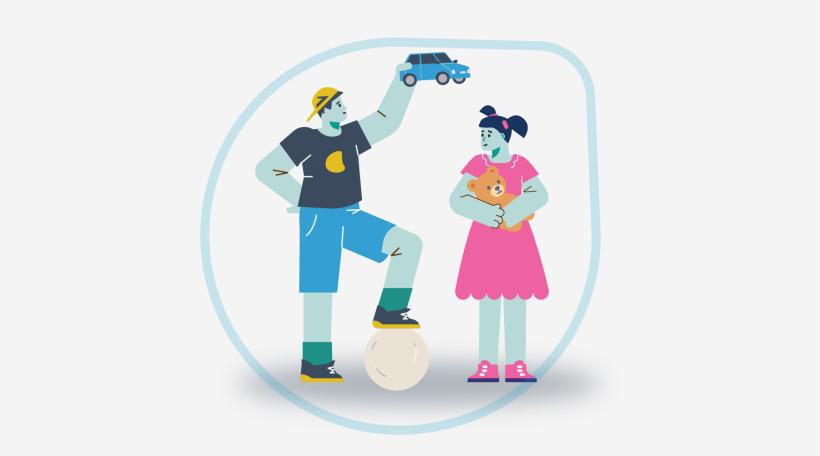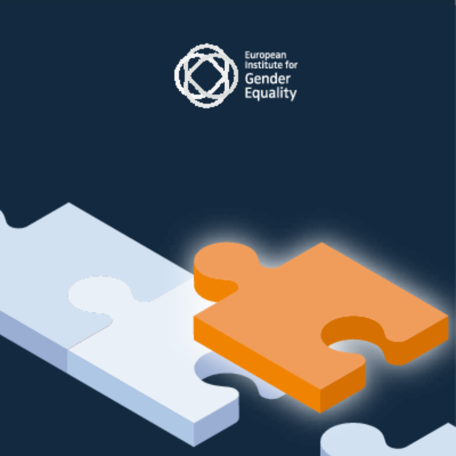In an Inter-parliamentary Committee Meeting at European Parliament on 7 March 2024 Director Carlien Scheele weighs in on the challenges women face in sports – and how they can be a force for promoting gender equality on the occasion of International Women’s Day 2024.
#SeAcabó. That’s Spanish for ‘It’s Over’.
In the wake of Spain’s victory in the women’s world cup final last summer, where Spanish Football Federation (RFEF) president Luis Rubiales infamously kissed player Jenni Hermoso – Spain’s social media was ablaze with a new wave of the #MeToo movement.
‘It’s Over’ was the hashtag driving the online discourse.
Pushing for change.
Putting an age-old issue into sharp focus with fresh momentum.
Gender inequality in sports is far from novel.
The state of play in sports - from decision making to gender stereotypes to gender-based violence, shows that equality in sports is still a match yet to be won.
But sports can reflect society. It has the power to unite. It can inspire transformative change. It can serve as a platform to break down barriers and promote gender equality and inclusivity.
Yet we still have many challenges to overcome.
But for that we need to know where we stand. So let me share my agency’s evidence.
Higher the position, less women present
We collect evidence on women and men in decision making positions across different areas of life– including sports. The data show us steady progress towards gender balance in sport over the years. Yet, women remain underrepresented in the decision-making bodies of sporting institutions at national and European levels. To start with, at the EU level, the share of women presidents virtually tripled since 2019 but still there are only 3 women presidents out of 28 in the European Confederations of Sports, only just over 10%.
The data show us steady progress towards gender balance in sport over the years. Yet, women remain underrepresented in the decision-making bodies of sporting institutions.
Let’s have a look at the National Olympic Committees – they hold the important role to ensure the representation of their respective countries at the Olympic Games. Very timely as we have the Paris Olympic Games this summer.
In EU countries in these national committees women account for 1 up to 3 positions out of 10 according to our Gender Statistics Database. This reality holds little promise for change for the upcoming games. It’s woefully low.
Now, when we look at the most funded national sports federations - the top ten Olympic sports granted the highest public funding during the latest allocation of funds (from 2018) - the share of women slightly improved in all positions. But women are still less than 1 out of 4 in all categories such as presidents, deputy presidents, members and executive heads.
Moving to the national political level, and here we see a positive development, there has been gender balance amongst senior ministers since 2020 and administrators since 2019. Change is possible.
Gender stereotypes in sports
Now that you have the state of play in some concrete numbers, let’s look at stereotypes. I’m quite confident you have at the very least seen stereotypes in sports played out in front of you. In fact, sports are a field full of obstacles for women – given that it is male-dominated and traditionally associated with men and boys.
Sports are a field full of obstacles for women – given that it is male-dominated and traditionally associated with men and boys.
Characteristics such as ‘physical strength’ and ‘resilience’, ‘speed’, and ‘highly competitive’ – are typically seen as masculine traits – based on the social constructs of masculinity. Therefore, based on rigid ideas of what it means to be a man – a man who does not play sports is unmanly, and if a woman plays sports, she is too manly.
But times are moving forward and there is greater gender diversity at the Olympic Games. In the recent Tokyo Olympics 18 mixed-gender events were introduced in fields including archery, athletics, badminton, sailing, swimming, and triathlon.
I recently learned that korfball (which was invented already in 1902 by a Dutch school teacher), is a game played in gender-mixed teams, with two teams of 8 players: 4 male and 4 female.
Let me bring in another dimension to the stereotypes that hold women back from sport. And that is unpaid care responsibilities. Again, based on the engrained stereotype that women take on the role of the caregiver, the time they have left over after their care responsibilities, for leisure activities including sport, is limited.
Evidence from our 2022 survey on gender gaps in unpaid care, individual and social activities revealed that nearly half of women - 49% - living with a partner report assuming primary responsibility for these kinds of essential tasks such as bathing, feeding and changing nappies, compared to a mere 6% of men.
Education is key for breaking gender stereotypes
The media's impact
The media can play a significant role in either reinforcing or challenging gender stereotypes in sports.
For the sake of TV ratings, women athletes are often sexualised – where the media lens places emphasis on their femininity and sexual attraction rather than their strength and skills. Therefore, their achievements go unnoticed. All their hard work amounts to how they look.
Studies have shown a positive correlation between the number of women sports journalists and the quantity of women sports coverage.
There are also significant differences in the media coverage given to women’s and men’s sports, with the latter receiving far more attention.
Studies have also shown a positive correlation between the number of women sports journalists and the quantity of women sports coverage. Women sports reporters’ work have been recognised as 'visibly more likely to challenge stereotypes and less likely to reinforce them' than those produced by male journalists.
Gender-based violence and sports
We cannot deny that gender-based violence in sports happens. Even though we don’t have a lot of data, therefore little is known on the prevalence of GBV in sports, we know those overall figures – like 1 in 3 women has experienced physical and/or sexual violence since the age of 15 – this happens across all and any area of life.
The Rubiales case merely scratches the surface of what potentially goes on under the radar– so to speak.
At the EU Member States level, the concept of GBV and sports is not well known.
We need to also keep in mind that women and girls athletes, especially when competing at elite levels and highly visible online, are exposed to cyberviolence as our agency’s evidence shows. That includes online gender-based hate speech. And that violence can also move from the online to the offline world.
Explore our resources on gender-based violence
In closing
Despite women’s increased participation in the sports sector over the years, women are still under-represented in sports decision-making at the EU and national level.
There is a lack of gender statistics on sports – more data are needed!
There is also a lack of consensus on concepts, for example when it comes to gender-based violence – and this is the biggest challenge for data collection.
Media have a crucial role in challenging gender stereotypes in sports.
A potential way forward? Gender mainstreaming in sports policies.
- Gender mainstreaming is a cyclic process, which starts from the defining and planning phases and continues through the implementation, monitoring and evaluation phases. This means that you need a gender perspective in all phases of policy making – but it also means you can start wherever you are.
- And gender mainstreaming can be applied in all policy areas, including sports. – since it is adjustable to different legislative, public policy, programming or budgeting processes across policy areas.
- How does this work in practice? - We at the EU agency for gender equality have developed a Gender Mainstreaming Platform that provides online resources to help policymakers integrate a gender-sensitive approach into their field.
- I invite you to have a look at the platform to find guidance and support to develop gender-sensitive sport policies and contribute to overcoming at least some of the gender inequality issues in sport mentioned during my contribution.
As I said in the beginning – sports can be a force for good to inspire a future of true gender equality in every arena.
Thank you.




